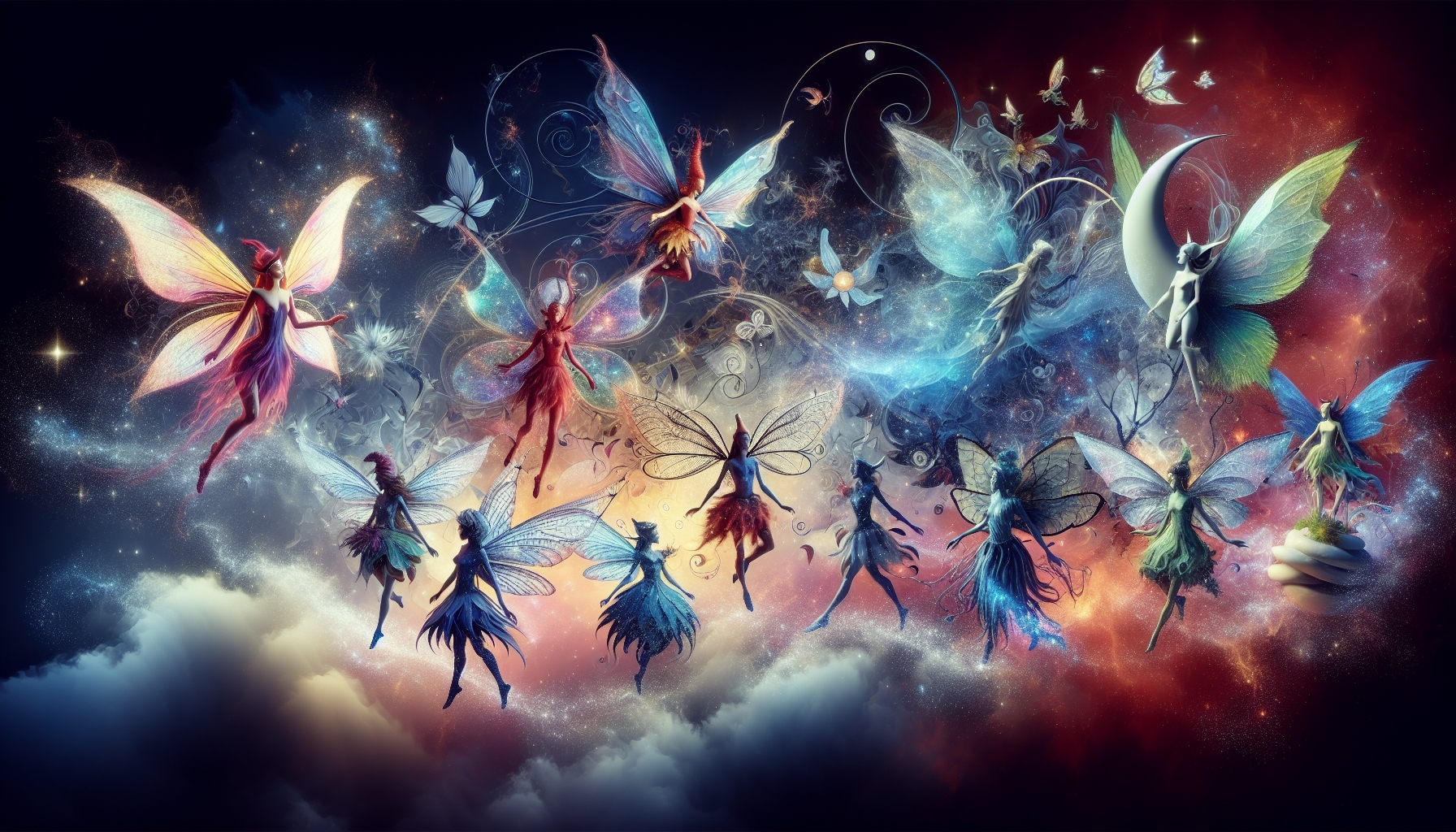Different Kinds of Fairies
Different Kinds of Fairies folklore are a rich tapestry of myths, stories, and traditions that span cultures and continents. These mythical beings are often known to embody nature, possess magical powers, and interact with humans in various ways—sometimes mischievous, sometimes benevolent. Let's delve into the intricate world of 15 different types of fairies, exploring their cultural backgrounds, origins, and unique characteristics. I'll also include my personal opinions about these ethereal entities.
The Different Kinds of Fairies
1. Brownies (Scotland) Brownies are household fairies known for their benevolent nature. They typically perform chores and helpful tasks around the house when the human inhabitants are asleep. However, they expect some form of offerings like milk or porridge in return.
Brownies seem like the ideal roommates who not only share your space but make it better. Their folklore paints a harmonious picture of coexistence, which I find charming.
2. Banshee (Ireland) Banshees come from Irish mythology and are often considered omens of death. They wail in the night to forewarn families of an impending demise. Though fearsome, they're not considered evil.
While their role is unsettling, Banshees serve as a form of a heads-up for the families they haunt. Their haunting wails may be discomforting, but they are rooted in a sense of duty.
3. Leprechaun (Ireland) Leprechauns are Irish fairies primarily associated with wealth and trickery. These solitary creatures spend their days making shoes and hiding their gold at the end of rainbows.
Leprechauns are the tricksters of the fairy world. Their elusive nature and penchant for pranks make them intriguing but possibly frustrating if you're on a quest for their gold.
4.Selkie (Scotland and Ireland) Selkies are sea fairies capable of transforming from seals into humans by shedding their skins. They are often linked to tales of love and tragedy.
Selkies encapsulate the romantic yet tragic essence of fairy lore. Their ability to transition between human and seal forms makes them one of the more complex and nuanced fairy beings.
5. Tengu (Japan) In Japanese folklore, Tengu are mountain-dwelling fairies with human and birdlike features. They're skilled martial artists and are known to both protect and curse humans.
Tengu are fascinating because they embody the duality of fairy behavior: they can be either your protector or your doom, depending on how you interact with them.
6. Djinn (Middle East) Also known as genies, Djinn are shape-shifting spirits capable of granting wishes or causing mischief. They are rooted in Islamic and pre-Islamic Arabian mythology.
Djinns offer a wealth of storytelling potential, from Aladdin's lamp to darker, more complex mythologies. They personify the unpredictability of wish-fulfillment.
7. Chaneques (Mexico) Chaneques are Mexican forest fairies known to abduct people and make them lose their way. Their intention isn't necessarily evil; they aim to protect nature.
Chaneques serve as a crucial reminder that humans are not always the most important beings in nature. Their actions are a form of environmental guardianship, which I admire.
8. Menehune (Hawaii) Native to Hawaiian folklore, Menehune are small-sized fairies skilled in craftsmanship. They build structures and fishponds overnight, which are often attributed to their magical abilities.
The Menehune are fascinating because they are like engineers and builders of the fairy world. Their creations add a layer of wonder to Hawaiian landscapes.
9. Pixies (England) Pixies are English fairies known for their playful and mischievous behavior. They're smaller in size and love to dance and make merry.
Pixies embody the light-hearted side of fairy culture. Their sole aim is to spread joy and whimsy, which I find truly uplifting.
10. Rusalka (Slavic) Slavic mythology brings us Rusalka, water-dwelling fairies known to seduce and drown men. They are often associated with the spirits of young women who died tragically. Rusalka are hauntingly beautiful but dangerous, serving as a cautionary tale against the allure of unchecked desires.
11. Tooth Fairy (Modern, Western) The Tooth Fairy exchanges children's lost teeth for money or gifts. Her origins are a blend of various European and American traditions. The Tooth Fairy makes dental hygiene fun for kids. She transforms a potentially distressing experience into a magical one.
12. Púca (Ireland) The Púca is an Irish fairy capable of shape-shifting and bringing both good and bad fortune. They are unpredictable and love to create chaos. The Púca embodies the capricious nature of fate. It's a reminder that life can bring surprises, both pleasant and not-so-pleasant.
13. Alux (Mayan) Originating from Mayan mythology, Aluxes are small, invisible beings that can assume physical form to communicate or frighten humans. They are protectors of the natural world. Aluxes carry the weighty responsibility of being environmental guardians. They serve a significant purpose but can also be menacing if disrespected
14. Nisse (Nordic) Nisse are Scandinavian household fairies that look after animals and the home. They require respect and a bowl of porridge during Christmas. Nisse are another example of harmonious coexistence between humans and fairies. They encapsulate the holiday spirit year-round.
15. Mothman (American Folklore) Though not a traditional fairy, Mothman is a winged creature from West Virginia folklore, often considered an omen of disaster. Mothman intrigues me as a modern folklore entity that blurs the lines between traditional fairy characteristics and urban legends.
The Different Kinds of Fairies have permeated global cultures, taking on various forms and serving different roles—from household helpers to harbingers of doom. This diversity makes the world of fairies a complex, fascinating realm worth exploring. It's a tapestry of traditions that not only entertains but also offers insights into the cultures they originate from.
So, what's my opinion of all these Different Kinds of Fairies? Fairies are as multi-dimensional as the cultures they come from. They challenge us, assist us, and sometimes even confound us, making our world a much more enchanting place to live.
I hope you enjoyed this magical journey

